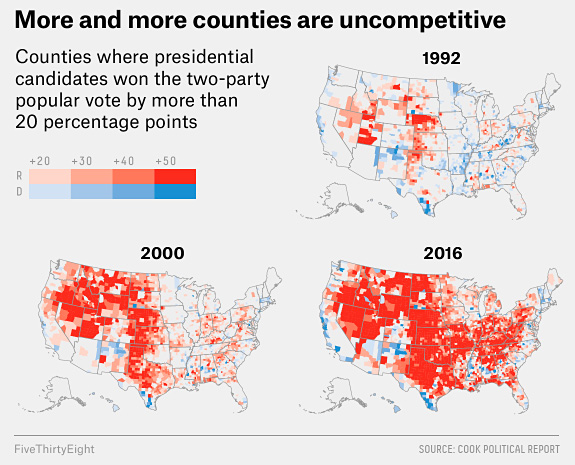Over at 538, David Wasserman has an interesting piece about the growing partisan divide in America. In particular, there are hardly any purple counties left:
Of the nation’s 3,113 counties (or county equivalents), just 303 were decided by single-digit margins — less than 10 percent. In contrast, 1,096 counties fit that description in 1992, even though that election featured a wider national spread. During the same period, the number of extreme landslide counties — those decided by margins exceeding 50 percentage points — exploded from 93 to 1,196, or over a third of the nation’s counties.
But things are actually even more interesting than Wasserman suggests. He illustrates the growing partisan trend with a set of maps from 1992 to 2016, which show the increasing number of landslide counties. But it turns out there’s very little change from election to election. In fact, there are only two elections since 1992 which produced a big change:

In years when a Republican is elected, the nation becomes far more polarized. Or, if you prefer, in years when the nation becomes far more polarized, a Republican wins the election. Discuss.

















